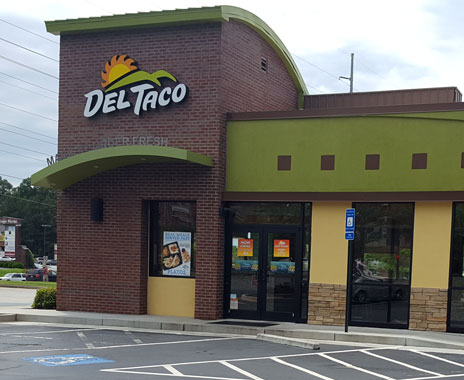Clearly, Del Taco is doing something right.
The restaurant industry is suffering through one its roughest periods in recent memory. In August, TDn2K reported that restaurant same-store sales fell 2 percent and traffic declined 3.9 percent across the industry, and these negative numbers were actually improvements from July. Quick-service restaurants recorded their third consecutive quarter of negative growth is same-store sales.
Del Taco, the second largest Mexican-American quick-serve chain by units in the U.S., bucked all those trends. It reported system-wide sales growth of 7.1 percent in Q2 and company-owned restaurant sales growth of 6.9 percent, marking the 15th and 20th consecutive quarter of gains, respectively. Total revenue grew 8.6 percent to $108.6 million and net income rose to $5.3 million from $4.9 million in Q2 2016. The company raised its estimate for 2017 sales growth and is on track to meet its goal of its stores generating average annual volume of $1.5 million.
Why is Del Taco generating such positive results?
A Menu Strategy with Focused Objectives
One reason, suggests Howland Blackiston, is a well-defined menu strategy whose objectives were to shift more transactions to higher-priced premium menu items, visually elevate a “quick-service plus” brand positioning, improve ease and speed of ordering, increase ticket prices, communicate value, and underscore the brand’s “fresh-made” and healthy positioning. Blackiston is a principal in King-Casey, a well-known restaurant and retail-consulting firm based in Westport, Connecticut, and it was his firm that Del Taco partnered with to achieve the objectives cited above through a menuboard optimization program.
“Del Taco is a brand traditionally known for low-cost items, and they have a clientele that orders from a ‘buck and under’ menu,” says Blackiston. “Therefore, the big business challenge was how to shift more transactions to premium orders without losing the loyalty of traditional customers. I cannot over-emphasize the importance of the clarity that Del Taco executives brought to the process,” says Blackiston. “They knew exactly what they wanted to achieve and kept their eye on the ball at all times.”
The Menuboard Optimization Process
King-Casey followed a structured approach to menuboard optimization that included:
- Site audits to review existing Del Taco menuboard conditions and the merchandising practices and in-store communications that supported the menuboard.
- Data analytics that used revenue and profitability analysis to identify opportunities for growth in menu item prioritization, simplification and improved merchandising. Understanding revenue and profitability projections helps identify the strategies that achieve the best results in a real-life situation.
- Menu strategy review with Del Taco management to agree on and prioritize how their food & beverage products would contribute to their business growth, and to agree on their prioritization on the menuboard.
- Scientific consumer insights, developed from more than 300 face-to-face interviews, enabled Del Taco to validate the one new strategy that would result in the greatest business growth and consumer satisfaction. This strategy significantly outperformed the current menu and other options, and was ultimately used to guide Del Taco’s development of the actual boards that were rolled out across the system.
Practical Solutions
The new menuboards that are now proving to be successful embraced these King-Casey recommendations:
- “Buck and under” communications were simplified and visually de-emphasized. The less expensive items are still available to the traditional customers seeking them, but new communications for this category will likely draw less attention.
- The previous menuboards were cluttered with 70-plus food images, which reinforced traditional quick-service impressions, complicated menu navigation, slowed throughput and diminished the ability to showcase high-margin, premium items. The new design reduced the number of images from 70+ to less than 40. It improved ease or ordering, decreased clutter, elevated the “quick-service plus” branding and, most importantly, used larger and more appetizing images to encourage desirable sales.
- Higher-priced “Dinner at Del” offerings are visually highlighted in the menuboard “hot spot,” (where consumers tend to look first).
- Hand-crafted “Ensaladas”—now prominently featured—communicate “health” and “fresh-made” brand positioning.
- High margin carbonated soft drinks are now shown visually, rather than text-listed. This increases thirst appeal and purchase intent.
Summarizing the successful project, Blackiston says that “the Del Taco team did their homework up front and developed a thoughtful, articulate menu strategy to ensure that new menuboard designs would realize business objectives.” The company’s ongoing financial achievements bear that out.












